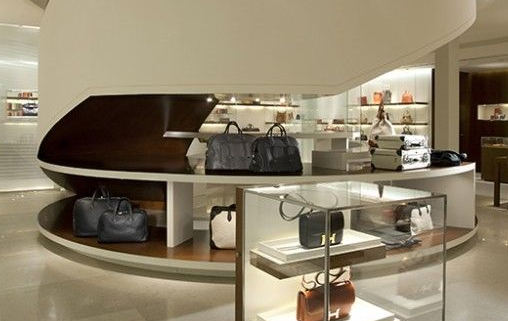

The Hermès family were protestant Germans who settled in France in 1828. Thierry Hermès first established the family business as a harness shop in the Grands Boulevards quarter of Paris almost a decade later. The shop served European noblemen, creating the finest wrought bridles and harnesses for carriages. Hermès won first prize in its class at the 1855 Exposition Universelle in Paris, Thierry also personally won the first-class medal at the 1867 Exposition. Thierry’s clients were the stylish Parisian beau monde and European royalty including Napoléon III and his empress, Eugénie.
Shortly after the 1867 Exposition, Thierry’s son Charles-Émile took over management of the company and moved the Hermès shop to 24 Rue Faubourg Saint-Honoré, a location which still boasts the flagship Hermès boutique. With the aid of his sons Adolphe and Émile-Maurice, the company introduced a saddlery range and expanded retail sales to cater to the worldwide elite from North America, Russia and Asia.
For a number of years Hermès has acted in partnership with Tuareg tribesmen to produce a line of silver Hermès jewellery. The Saharan nomad’s traditional drawings and motifs also appear on Hermès products especially their silk scarves.
Another of Hermès trademarks is their opulent handbag collections. In accordance with their luxury standards Hermès does not use an assembly production line; each master craftsman works on one piece at a time. Due to this labour intensive production method and use of rare expensive materials and exotic leathers one bag can take up to 24 hours to create. For example the construction of each Kelly bag requires 18 hours of work from a single highly trained artisan. Exotic leathers used by Hermès include lizard from Malaysia, alligator from Florida, buffalo from Pakistan, crocodile from Australia and ostrich, goat and oxen from all over the world.
The most recognisable Hermès bags are the Hermès Kelly bag; made popular by its namesake Grace Kelly, the Hermès Birkin bag; named in honour of Jane Birkin and the Constance shoulder bag with its double strap and large H clasp. All remain constantly in demand with long waiting lists.
Arguably the most iconic in the Hermès handbag line though, is the Kelly bag. The goatskin lining is sewn first followed by the base of the bag which is hand-sewn to the front and back using waxed linen thread. A double saddle stitch is used to sew the bag and before each stitch is made a hole is punched first with an awl to stop any damage to the leather. Each handbag is an organic form, with the particular grain of the leather determining the placement of the pattern and the hand shaping of the handles. The layers of stitched leather are then smoothed with sandpaper and dyed to match the handbag. Hot wax is then applied to the handle to protect the leather from moisture and the external hardware, pockets and distinctive Hermès stamp is applied.
15 Broad Street
New York, NY 10005, United States
(212) 785-3030
691 Madison Avenue
New York, NY 10065, United States
(212) 751-3181



















